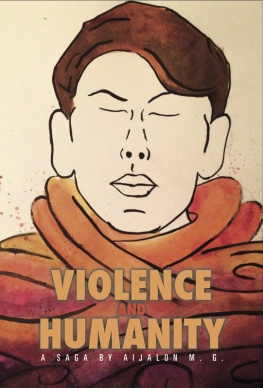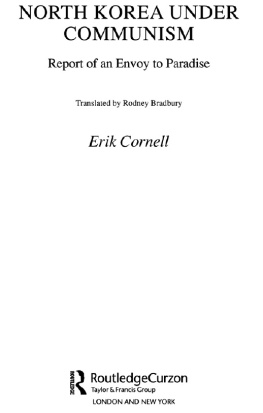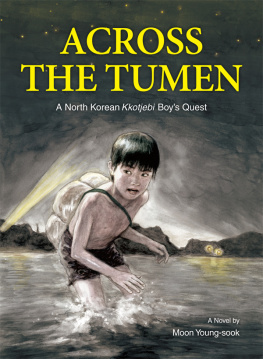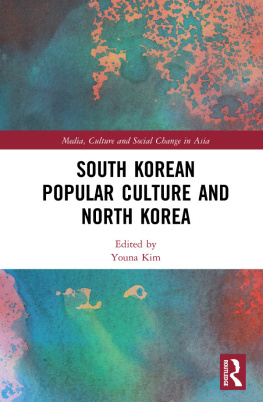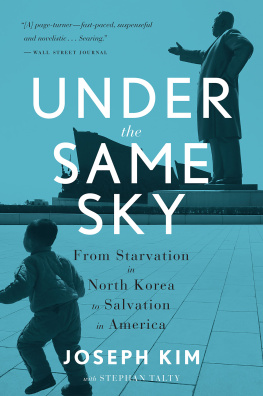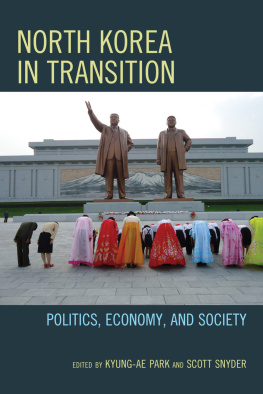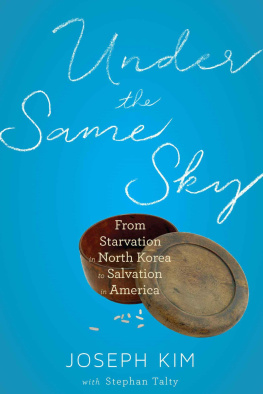
Copyright 2014 Aijalon M. G. All rights reserved.
Published 2015.
First Edition
For inquiries and permissions visit
aijalongomes.com
No portions of this publication may be reproduced or transmitted in any form or by any means, electronic or mechanical, including photocopying, recording, or by any database or retrieval system, without the prior permission of the author, except as permitted under the United States Copyright Act of 1976.
Interior photographs by: John Moores, Sr.
Cover illustration by: Eddie Dimitrius Scott
ISBN-10: 0990841111
ISBN-13: 978-0-9908411-1-1
ISBN: 9780990841104
Library of Congress Control Number: 2015904135
Chapter Headings
Foreword
None of my friends or family have ever asked about what took place. They love me no end, I know that. But they treat me as if nothing happened a mistake. Its as if they had been told by some expert, someone with authority in these matters, not to inquire about my experience in the DPRK, that in my own time I would divulge the events.
It is counter to my nature to discuss myself, but now that months and years have passed it frustrates me to know they are curious and concerned yet avoid the subject altogether. I had intended to tell my family this story if I returned to the United States of America. Silence leads to multitudes upon multitudes of assumptions. Assumptions then lead to misinformation and misunderstanding. Anger and strife create more miscommunication and widen the distance.
I wish someone had asked about those 213 days and nights in the Democratic Peoples Republic of Korea. I have had more occasions of hopelessness in my return than I ever had in the DPRK. And that has forced me to produce this for my family.
Borders
Poring over a map I had acquired about a year and a half before at the Cheorwon Peace Observatory where you can gaze across the DMZ and into the North I found a point of interest: a church near the dividing line. While trying to locate a taxi to take me there, I discovered the keys to the school where I worked were still in my pocket. By the time I had dropped them in the mail, it was mid-afternoon. I wanted to be at the church on the other side of the checkpoint a little before sunset.
Once we were underway, the taxi driver had only a little trouble finding the dirt road that led to my destination. As it happened, the square white concrete church was adjacent to a very small military post, or maybe it was a supply cache. I saw four or five soldiers exit a military truck and enter a nondescript building. The taxi driver was willing to wait once I realized the church was locked up, but I paid him and indicated it wasnt necessary. It was at that moment that I got an international telephone call from whom I cant say, because I ignored it, assuming that my sister had read my e-mail9 and that she or another relative was phoning to talk me out of what I was prepared to accomplish.
Wanting to find shelter from the elements it was a late January day in 2010 and to avoid being noticed by the militia, I circled to the rear of the church. Built into one of the sidewalls were stairs leading to a flat roof. From the snow-laden roof and the partially exposed spire where a bell once hung, I kept watch on my surroundings, spying out into the direction the map indicated for a wall that could be climbed. Crouching within the most concealed part of the weather-beaten spire, I urged the clock on my phone to send the military men on their way and to lower the sun and assist me in my stealth. Fortunately, though, the sun seemed to stand still on the horizon for a bit after they left. This temporarily allowed me to tread through the frozen, overturned remnants of the produce fields in my path.
Once darkness had settled in, I found myself using my phones lamp to guide me toward the mountains. Later, the overcast sky cleared, and the moon and the snow helped me see my way. Once or twice when a vehicle crept along a long stretch of road, I concealed myself beside dung mounds, along with some scurrying, unidentifiable fauna. After a while, I encountered a well-lit bridge over a small, partially frozen river, which I thought must be a heavily guarded passage. After debating if I had the courage to cross, I made it to the other side undetected, only to find that the road led me farther toward civilization.
Changing course and heading toward the ominous black mountains, I eased myself over a frozen part of the stream. In deep woods now, woods layered with snow, I scaled the varying inclines toward a summit. As I recovered there, it was apparent this apex offered no clear views that would allow me to scope out a route north, and so it was at each successive height. In the frozen knee-deep snow I could discern trails of footprints, which I followed, assuming they had been laid down by refugees fleeing in the opposite direction. At any turn, I anticipated encountering a defector. Only after I noticed that the prints wandered and intersected did I think they might have been left by animals.
Finally, after my wet and nearly frozen feet mounted a plateau where I could scan above the treetops, they had to rest and be warmed. I used the battery of my cellphone. After learning to endure random sounds from the sudden movements around me, I reclined on low-hanging tree branches and eventually drifted into a dreamless sleep until near dawn. Now, lacking a cellphone signal, I couldnt know the time accurately.
When I awoke, I ate a little beef jerky, along with handfuls of snow, before continuing on. At every peak I approached I was hopeful it would be the one to point me toward my destination, but that was not so. I walked up and down one side of a mountain, only to be presented with another, and then another. The dense, tall forest was disorienting. But there was an awesome, eerie and strangely encouraging sight: endless lines of barbed wire. Their presence confirmed I was heading in the right direction. I pushed on, and found that in some locations the barbed wire was stacked higher, and all manner of rubber tires and helmets were strewn along some of the mountain wedges. I marveled that everything was the way they left it.
Using a line of barbed wire as leverage, I hiked its outline uphill toward a strategic web of deep trenches on the mountainside that branched off into a series of small cement bunkers. Each cramped bunker could hold two or three people. Besides the crawl-through entrance, the only other openings were small rectangular slits. Next to them were painted diagrams of potential flight paths and the angles to position the weapons. Disconcerted by the scene and by the thought of the fear that still lingered in those spaces I rested in one of them only long enough to readjust my clothing, lighten my load, and eat more beef jerky.
Treading through the maze of snow-filled trenches, obviously dug by someones army, I was certain I was heading up the right mountain and in the right direction. Atop the mountain, I beheld a countryside panorama but was still uncertain about which parallel I was situated on. Built into the landscape were a few old and seemingly abandoned structures, made of cement, brick, and wood. The more dilapidated sheds held aged military equipment. I cautiously investigated each structure for clues about which side they belonged to but concluded nothing.
A little farther down a paved road, housed in a barnlike building, I saw an unusual object that appeared to be a large, egg-shaped pod or a blackened, cast-iron, pot-bellied oven. It was suspended somehow at waist level and attached was a heavy metal door. Off to the side was a pair of old boots. I decided that before I left I would exchange them for the worn, soaked, and flimsy patent-leather pair I was wearing.
Next page
